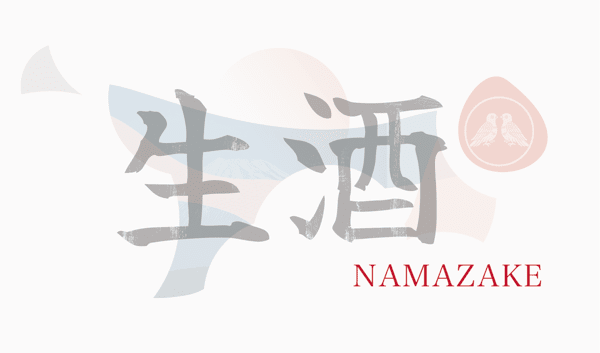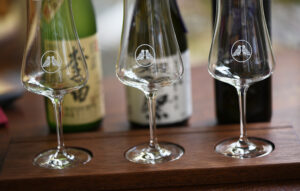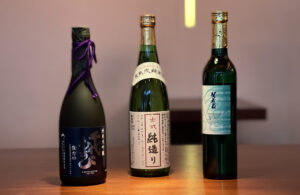What is Namazake?
The word "nama" (生) means "raw" in German. Namazake (生酒) is therefore "raw sake" and refers to sake that has not been pasteurized. The S of sake becomes a softly pronounced Z in the combination, as always (see Rendaku).
For the Sake production the pasteurization process known as "hi-ire" (火入れ) is required. This process prevents the quality of the finished sake from changing. It involves pasteurizing the sake by heating it to about 60 °C, which prevents the enzymes from fermenting further. It also ensures that the bacteria are killed and the sake does not become cloudy. This process is done twice for most sake, once before storage and once before bottling. In this way, sake remains stable for a long time, although to be on the safe side, it should always be stored refrigerated.
Three types of namazake
There are three different types of sake labeled "Nama," distinguished by when and how often they were pasteurized: Hon-Nama, Nama-chozō and Nama-zume.
Hon-Nama (本生)
Hon-Nama is "real raw sake", so to speak.
While "normal" sake has been pasteurized twice, Hon-Nama is sake that has not been pasteurized at all. Typically, namazake means this category in Japan: Hon-Nama, sake that has not been pasteurized at all.
The freshness of sake is of great importance. Since it is not heat-treated, it has a short shelf life and is often only available from the sake brewery directly on site and in the surrounding area. Thanks to advances in refrigerated transport technology, it is now possible to drink namazake outside Japan - but hon namazake outside Japan is still a rarity.
Nama-chozō (生貯蔵)
Nama-chozō sake is freshly aged sake.
It is stored in raw form after the sake mash is pressed and pasteurized only once before being bottled. The quality is more stable than Namazake and is therefore relatively easy to find overseas. It is worth trying, as it is said to be the closest to the taste of freshly pressed Namazake.
Nama-zume (生詰め)
Nama-zume sake is freshly bottled sake. It is pasteurized only once before being stored. Most of these sakes are brewed in winter or spring and stored and aged for about six months until the following fall. The characteristics of Nama-zume sake are therefore somewhat more mature, mellow and full-bodied than those of other Namazake varieties.
How does Namazake taste?
Namazake retains much of its original fresh and fruity flavor. It is light and smooth on the palate and pleasant to drink. Some are slightly fizzy.
Pasteurization is a necessary process to maintain stable quality. However, if pasteurization is omitted, the sake has a slightly more lively flavor character, which can make sake enjoyment even more immediate and interesting.
How to enjoy namazake
Namazake should always be stored in the refrigerator.
The yeast and microorganisms are still alive in the Namazake. Under warm and humid conditions they become more active and the taste deteriorates faster.
The fresh, crisp taste of Namazake is best served chilled. The enjoyment of Namazake is best when paired with light dishes such as Tōfu or Sashimi. Freshness is key, so drink it as soon as possible after opening.



